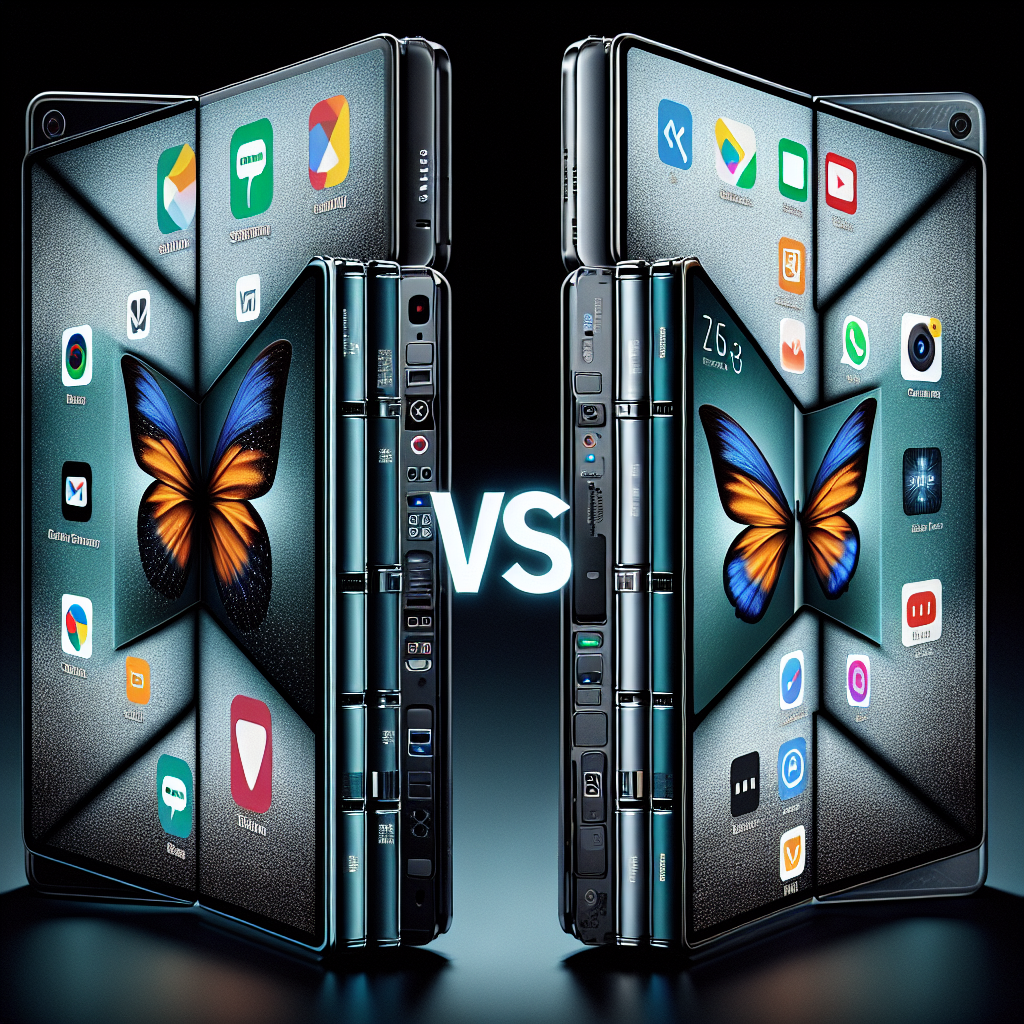# Samsung Galaxy Z Fold 5 vs Huawei Mate X3: Foldable Phones Face-off
Foldable phones are back in the spotlight with significant improvements in their technology and design. The Samsung Galaxy Z Fold 5 and Huawei Mate X3 stand out as the flagships of this innovative category. For consumers eager to find a balance between cutting-edge features and practical usability, understanding the intricate differences between these two devices is crucial.
Design and Build Quality
When it comes to design, both the Samsung Galaxy Z Fold 5 and Huawei Mate X3 offer unique takes on foldable displays.
Samsung Galaxy Z Fold 5
The Galaxy Z Fold 5 continues Samsung’s tradition of offering a robust and premium feel. Its hinge mechanism is seamless, allowing easy unfolding into a large screen that acts like a mini tablet. This phone flaunts a slimmer design compared to its predecessors, which makes one-handed operation much easier. However, the crease in the middle of the screen is still slightly visible, a common feature for foldables, but it does not deter the overall viewing experience.
Huawei Mate X3
In contrast, the Huawei Mate X3 opts for a sleeker and more durable aluminum alloy frame. Huawei’s hinge design is touted as one of the best, minimizing the crease effect and providing a seamless viewing experience once unfolded. The Mate X3 is lighter and thinner than the Galaxy Z Fold 5, making it slightly more convenient for prolonged usage.
Display Quality
Both devices excel in offering expansive screens that enhance multimedia consumption.
Samsung Galaxy Z Fold 5
Samsung has always excelled in display technology, and the Z Fold 5 is no exception with its Dynamic AMOLED 2X screen. The 7.6-inch main display offers vibrant colors with a resolution of 2208 x 1768 pixels and a refresh rate of 120Hz, offering buttery-smooth scrolling and gaming experiences.
Huawei Mate X3
The Huawei Mate X3 sports a similarly impressive OLED display, stretching out to 8 inches with a resolution of 2480 x 2200 pixels. Huawei’s main selling point is the display’s adaptability in sunlight, maintaining great visibility outdoors. The Mate X3’s display is also praised for having a lesser crease, providing a more satisfying full-screen experience.
Performance and Battery Life
Performance is key, especially in foldable devices that need to support multiple tasks at once.
Samsung Galaxy Z Fold 5
Powered by the Snapdragon 8 Gen 2 chipset, the Galaxy Z Fold 5 handles multitasking with ease. It comes with 12GB of RAM, further ensuring that switching between apps is seamless. On the battery front, Samsung has equipped the phone with a 4400mAh battery, capable of lasting through a day of heavy use, supporting fast charging and wireless charging, which adds to its versatility.
Huawei Mate X3
The Huawei Mate X3 doesn’t lag behind with its Kirin 9000 chip and similarly supports 12GB of RAM. Performance-wise, it offers snappy responses, though it may slightly lag when handling the most graphically intensive mobile games. The Mate X3 boasts a 4500mAh battery, marginally larger than the Fold 5, which, together with Huawei’s power-saving features, helps extend battery life.
Camera Systems
Capturing great photos is essential, and both phones offer robust camera setups.
Samsung Galaxy Z Fold 5
Samsung equips the Galaxy Z Fold 5 with a triple-lens system on the rear: a 50 MP main, a 12 MP ultra-wide, and a 10 MP telephoto lens, providing versatile photography options. There’s also a 10 MP front cover camera and a 4 MP under-display camera for selfies when folded.
Huawei Mate X3
The Mate X3 is no slouch with its quad-camera setup including a 50 MP main sensor, 16 MP ultra-wide, 12 MP telephoto, and an 8 MP periscope lens. It provides depth in capturing fine details and handling low-light conditions better than the Samsung, thanks to its advanced night-mode capabilities.
Software and Ecosystem
User experience can vary significantly in terms of software.
Samsung Galaxy Z Fold 5
Running on Android 13 with Samsung’s One UI, the Z Fold 5 offers enhanced multitasking features, including split-screen capabilities and seamless app continuity, which optimizes the use of its foldable screen.
Huawei Mate X3
The Huawei Mate X3 runs on HarmonyOS, Huawei’s proprietary system. While it offers smooth performance and integrates well with Huawei’s ecosystem of products, it lacks direct access to Google services, a consideration for international users.
Conclusion: Which Foldable Should You Choose?
Choosing between the Samsung Galaxy Z Fold 5 and Huawei Mate X3 ultimately depends on your priorities. The Samsung Galaxy Z Fold 5 is ideal for users who are deeply entrenched in the Android ecosystem and seek robust multitasking capabilities with reliable software support. Its slightly heavier build is outweighed by its productive features and global service support.
On the other hand, if you value a sleeker design and superior display technology with impressive outdoor visibility, the Huawei Mate X3 could be your pick. It’s best for consumers interested in hardware innovation and are comfortable navigating an ecosystem outside Google’s services.
| Specification | Samsung Galaxy Z Fold 5 | Huawei Mate X3 |
|---|---|---|
| Main Display Size | 7.6 inches | 8 inches |
| Main Display Resolution | 2208 x 1768 pixels | 2480 x 2200 pixels |
| Refresh Rate | 120Hz | 90Hz |
| Processor | Snapdragon 8 Gen 2 | Kirin 9000 |
| RAM | 12GB | 12GB |
| Main Camera System | Triple | Quad |
| Battery Capacity | 4400mAh | 4500mAh |
| Operating System | Android 13 | HarmonyOS |
| Weight | 263 grams | 241 grams |

Leave a Reply